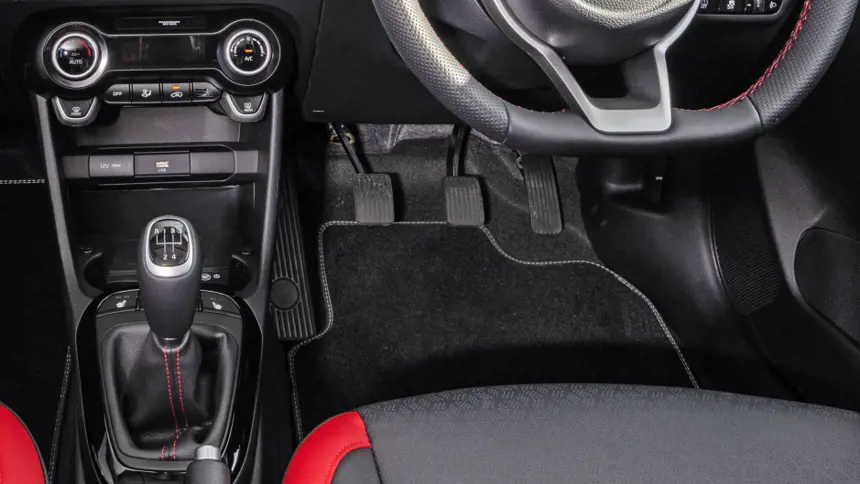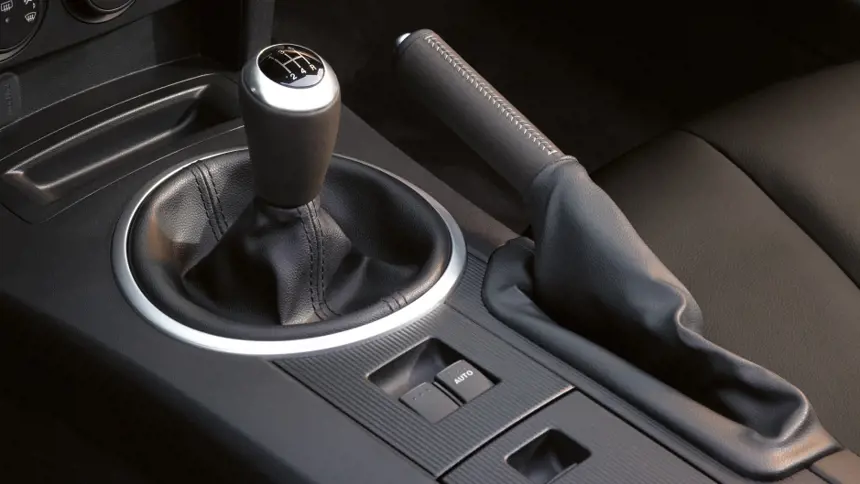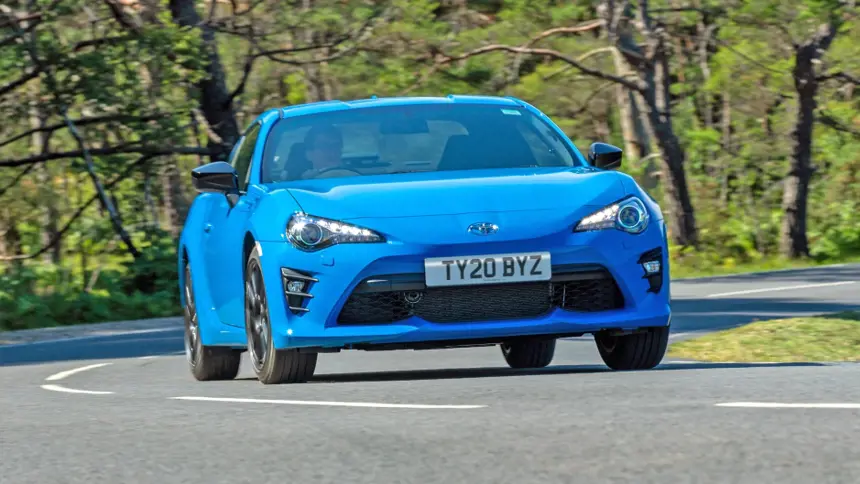How to drive a manual car
Take life by the gear stick and drive a manual car! Here is all you need to know to live the self-shifting dream

Mastering the art of driving a manual car can open the door to a number of benefits, including being able to get better fuel economy and taking the stress away from parking. These aren’t the only plus points, though, as manual cars can be easier to drive safely in the snow and they can be more enjoyable to zip around corners in compared to automatic vehicles. Really, there is a lot to love about cars with a clutch pedal and gear stick.
To help you on the road to gear change excellence, there are sections below covering a host of topics. The first section details the main components of a manual car before leading into segments on how to expertly carry out various driving tasks, such as setting off, changing gear and going into reverse. After these, we will look at advanced driving tips, such as being able to use a manual gearbox as a failsafe in case a car’s handbrake unexpectedly malfunctions.
An introduction to three pedals

All manual cars come with three pedals and a gear stick. The furthest left pedal is always the clutch pedal. This is pressed when you need to change gear because pressing it disconnects the gearbox from the engine so you can change gears easily. Automatic cars don’t have this pedal.
The middle pedal is the brake pedal, which unsurprisingly applies the brakes when pressed. As for the furthest right pedal, this is the accelerator, which in America is called the ‘gas pedal’. Simply put, the further you press the gas pedal the more fuel is sent to the engine. The more fuel an engine has to burn, the more power it will produce, and the faster it will make a car go - to a certain degree, at least.
Regardless of whether you're driving a right-hand-drive car in the UK or have rented a left-hand-drive model somewhere like America or Europe, these three pedals will always follow the same sequence (though the gear stick will be on the opposite side, which can take some getting used to).
In vintage and classic cars, all three pedals would be connected to the relevant components via metal, so that when a foot moves a pedal, it physically pulls or pushes something in the engine bay. More modern cars do this via electronics. As such it is common for phrases like ‘brake by wire’ to be used, which means that the braking is done via electronics rather than a physical connection.
Steering a manual car

Steering is generally the same in all cars – spin the wheel left and the wheels turn left, do the opposite and the wheels turn to the right. Even so, modern cars do have some interesting features to be aware of. Some cars use ‘variable steering’, which means that how much the wheels turn in relation to how far you spin the steering wheel changes depending on the speed a car is travelling at. This can be helpful in car parks and towns where you can need to go from one sharp turn to the next in quick succession.
There are also cars that have steering which gets lighter when you travel at lower speeds. This is helpful because it takes more effort to turn the wheels when travelling slowly, so a bit of extra assistance makes manoeuvres like parallel parking less of a workout.
How to set off in a manual car
Setting off in a manual car isn’t nearly as stressful or hard as some would have you to believe. If you are nervous, we’d recommend finding a nice flat area to practise, as setting off uphill can be more difficult as you have a handbrake - or parking brake - to contend with. There are a number of different parking brake systems, each changing the setting-off process and below, we have listed what needs to be considered for each.
Manual handbrakes

Manual parking brakes are commonly called handbrakes. They are normally a lever that a driver has to lift up and down to engage and disengage. Some systems come with a pedal that has to be pushed with your foot to put the handbrake on and an arm that you pull to disengage, but these are less common.
Parking brakes are most commonly used when a car is parked - no points for guessing where the name came from. They are also used when stationary in traffic for a long time or when setting off on a hill. If your car has a handbrake, when you set off you will need to slowly release at the same time you are starting to release the clutch and pressing the accelerator. This is ‘step 3’ in the instructions detailed later on. With a little practice, using a handbrake becomes second nature.
Electronic parking brakes

Electronic parking brakes are electronic versions of the above. Again, no points for guessing the origin of the name. Instead of having a large lever to pull, they tend to work via a switch that is slightly bigger than electric window switches. In the best cars with electronic parking brakes, these can work automatically so they will sense that a driver is setting off and disengage. Other cars might require that a driver to press or pull the switch to engage/disengage.
Hill hold and auto hold

Many modern cars come with hill hold or auto hold, which are temporary braking systems that mean you need not worry about applying a parking brake when stuck in traffic or setting off on a hill.
Typically they work by automatically applying the brakes when a car comes to a stop. This way the vehicle won’t roll anywhere until a driver attempts to set off. Some systems only hold the car for a few seconds after the driver takes their foot off the brake pedal (common for hill hold systems) while others will hold a car for as long as needed. These systems make setting off on hilly roads very easy.
Setting off: a step-by-step guide
With the types of parking brakes out of the way, let’s look at the process of setting off.
- Make sure it is safe and legal to pull away, such as being clear from other traffic and road users like bikes.
- With the engine running and the car in neutral, depress the clutch pedal and put the car into first gear.
- Gently release the clutch pedal and start to press the accelerator. You don’t need to press the accelerator much, so if the engine becomes very noisy, you are probably pressing it too far.
- At a certain point when releasing the clutch pedal you will reach something called the ‘biting point’. This is where the clutch physically connects the engine and gearbox. If the engine isn’t producing enough power to turn the gearbox/wheels, it will stall. If you are struggling with finding the biting point and stalling all the time, put the handbrake on and with the car in gear gently release the clutch pedal and at the moment the car feels like it is trying to move ever so slightly depress the clutch again. The point where the car starts to move is the beginning of the biting point, so keep that in mind and go back to step 1.
- Once you have reached the biting point and the car is starting to move, you can steadily release the clutch completely. How fast you need to set off will impact how far you need to press the accelerator, although when starting out it is best to undershoot and stall, rather than overshooting and firing off into a wall or other immovable object.
How to change gear in a manual car

Changing gears is a vital part of manual cars and luckily it is straightforward to get to grips with. The below steps show how to change gear, assuming a car is starting from a standstill.
- When safe to do so, set off as covered in the above section.
- Accelerate up to a reasonable amount of revs. Most cars come with a ‘tachometer’ which is a dial or graphic that shows how many revolutions per minute (often shortened to revs or rpm) an engine is doing. The tachometer is commonly next to the speedo.
- Once you reach roughly the rpms you are going to change gear, start to lift your right foot from the accelerator and press the clutch pedal with your left foot.
- When the clutch pedal is fully depressed and the accelerator pedal is fully released, move the gear stick from where it is, to the gear you would like next.
- After the gear stick is moved into place, release the clutch pedal to where it started while gently pressing the accelerator at the same time.
Normal engines can do a maximum of somewhere between 5,000 and 7,000rpm. If you need to accelerate as fast as possible, it is smart to accelerate close to the maximum rpm and then change gear, as this makes sure you keep an engine at its most powerful.
For normal driving, 3,000 to 3,500rpm is a good ballpark for changing gear but it is not an exact science and depends on the car being driven. If you change gear and the car feels like it is rattling a little, then you should aim for more revs next time. Likewise, if you change gear and the engine is already doing well over 2,500rpm, you might want to try changing gear sooner.
If the car lurches forward as you do this, it is because you have pressed the accelerator slightly too much, so next time try a little less of the gas pedal. If the car jolts when you are changing gear it is because you have not pressed the accelerator enough, so try a little more gas next time.
How to change into reverse in a manual car

Changing into reverse is slightly different to changing into other gears. There are a number of reasons why carmakers design their vehicles this way, but it is mostly for safety. This is because driving along and accidentally changing from a gear that moves a car forward to a gear that moves it backwards can cause catastrophic damage, and possibly result in an accident. With that in mind, below is guidance for how to safely get into reverse in a manual car.
- Make sure your car is stationary.
- When safe to do so, select reverse. Some cars have a little plastic ring underneath the top of the gearstick that must be lifted up to allow reverse to be selected. Other cars require the gearstick to be pressed downwards to get it into reverse, while some cars (normally older models) require a driver to press, release and then press the clutch pedal again to get into reverse.
- Once you are in reverse, follow the same setting-off procedure as detailed before but be sure to check what is behind you.
How to drive a manual car: advanced driving tips
When driving a manual car there are a number of advanced driving techniques that are worthwhile learning. Their benefits range from improving fuel economy to making driving in a spirited manner more satisfying and giving you better control of a car.
Driving in a spirited manner

Heel and toe driving. Heel and toe driving describes a technique where you use the toes of your right foot to brake and simultaneously use your right foot to tap the accelerator. Drivers do this to make changing gear smoother, which in turn makes it possible to drive faster.
We won’t delve into the physics behind why this is the case, but if heel and toe driving is of interest YouTube is awash with ‘How To’ videos. Some cars, like the latest Mini Cooper S, come with a feature called ‘auto blip’ or ‘rev matching’ – these are bits of software that have the same effect as a motorist heel and toe driving, but without the need to twist your right foot into awkward angles.
Fuel economy

Read the road ahead. Looking at the road ahead can help you pick the right gear and therefore improve your fuel economy. As an example, if you see that a roundabout is approaching, you can gauge when to lift your foot off the accelerator, change into the highest gear possible and roll up until the point you need to brake. Inefficient driving would be to stay in a low gear right up to the roundabout followed by heavy braking
Use the highest gear possible. Generally speaking, when cruising along at a constant speed (for example, on the motorway) the higher a gear a car is in, the better the fuel economy will be. The caveat to this is that once an engine is below around 1,800 to 2,000rpm, it will start to become uneconomical again, so sometimes it makes sense to be in a lower gear and have a few more revs. This can change from car to car but is a good rule of thumb.
Changing gear without a clutch

Although it is easier to change gear in a manual car with a clutch, technically speaking it isn’t needed once a car is moving. Why would this be necessary? Only in rare emergencies when your clutch stops working. Alternatively, you can change without using the leftmost pedal if you fancy extending the life of your clutch as you will use it less.
What we are about to say might sound like black magic, but trust us – it works. So, to change gear without a clutch while already moving, you simply lift your foot from the accelerator pedal and then gently move the gear stick into neutral.
The hard part comes when you are trying to get it into the next gear. When changing up a gear, you have a small window to complete the change. Once you move it into neutral smoothly push it towards the gear you want and you will feel some resistance. Don’t force it at this point, wait for the resistance to decrease slightly and then push the gear stick into place. In some cars, it will feel like it naturally gets pulled into place. If you haven’t felt the resistance drop and a couple of seconds pass, the window of opportunity has closed and you will need to depress the clutch to get into gear.
Changing down a gear without a clutch is more difficult. Once you have got into neutral, you need to give the accelerator a healthy prod with your right foot – the engine rpms will sharply increase. Once you have prodded, move the gear stick towards the gear you want and again feel the resistance. As the rpms of the engine fall, there will be a moment the resistance drops and when it does, push the gear stick into place.
Doing this can take some practice and if you are grinding the gears we don’t recommend you keep trying without some in-person training as you can cause considerable damage to your gearbox.

